Day 1 of a 3-day Early Winter Tour today. There were a few showers around, but thankfully mostly light and brief, and there were some nice bright sunny spells too – not a bad day at all for early December. We spent the day on the coast in NW Norfolk.
As we met up at the B&B in Hindolveston, a couple of skeins of Pink-footed Geese flew over calling. Historically they were rather scarce this far from the coast, but they are increasingly having to look further afield to find their favoured sugar beet fields, as less beet is grown and more fields are ploughed in straight after harvest. A worrying sign.
With a rather grey start, we decided to head for Titchwell first. More skeins of Pinkfeet flew over as we got nearer the coast, a more typical location. Two Fieldfares landed on the top of the hedge beside the road. There didn’t seem to be many birds left in the cover strips at Choseley as we passed, just a small flock of Linnets.
As we got out of the minbus in the car park at Titchwell, a tit flock was working its way through the trees beside us. A Goldcrest fluttered in the back of the hedge. We could hear a Bullfinch calling distantly through the trees. We had a quick walk round the overflow car park, to see if anything might have dropped in overnight, but the bushes here were quiet today.
There were lots of Goldfinches feeding in the alders by the Visitor Centre. We had just started looking through to see if anything else was with them, when something spooked them and they all flew off. We decided to press on and have another look on our way back later.
Out onto the start of the main path, there is still not much water in the ditches. One side is still dry, but we did find a Water Rail lurking in the water in the bottom the other side. They are often rather tame here, but this one was unusually jumpy and ran off up the ditch ahead of us.
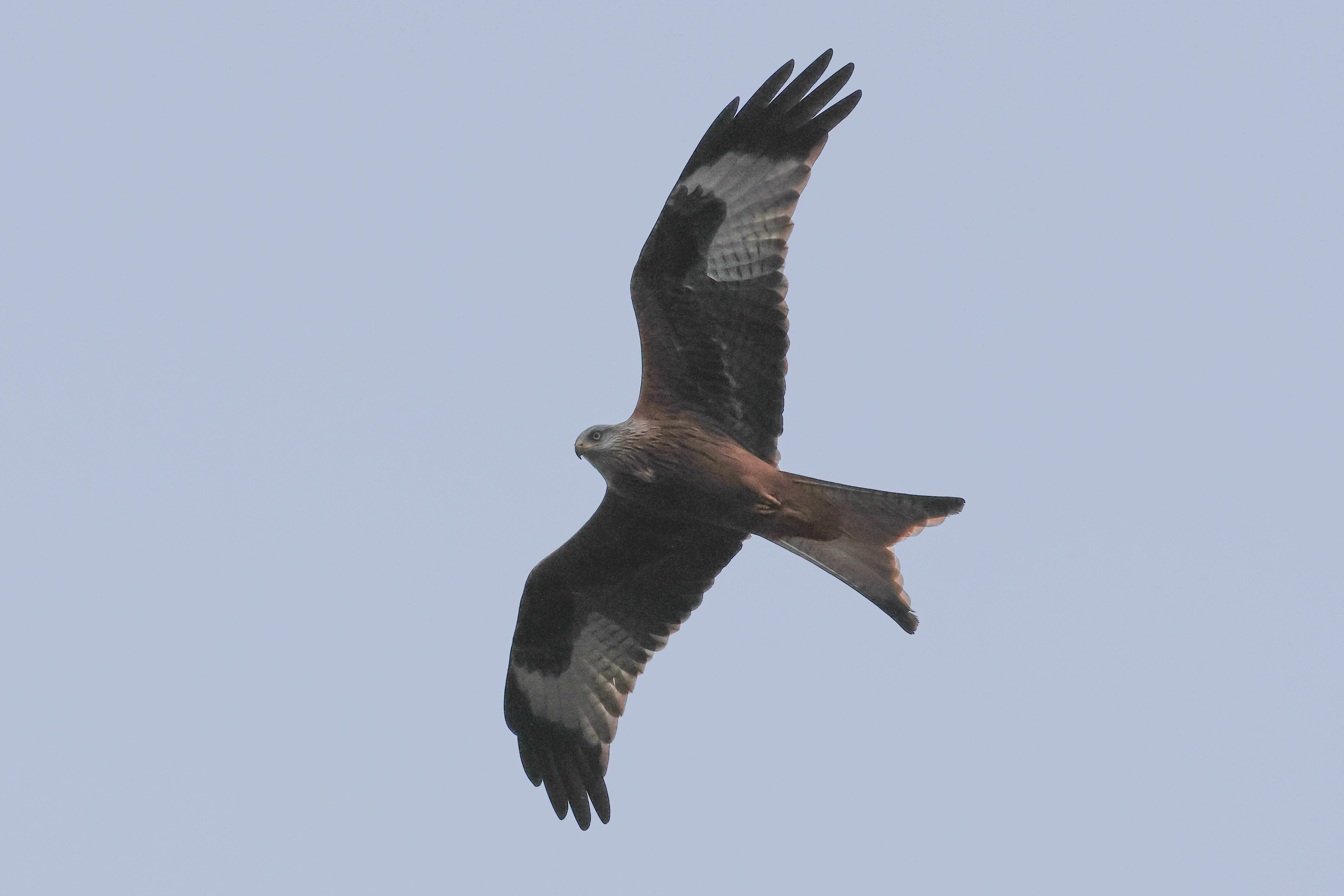
As we got out of the trees, a Red Kite drifted over and hung in the air overhead. It seemed to be checking us out – we were not dead yet! We could see a Great White Egret on the first pool through the reeds and a Marsh Harrier over the back of reedbed. A couple of the group got a brief view of a Bearded Tit, but it was a bit too windy for them today.
We stopped opposite the Reedbed Pool to talk to some of the locals who were just walking back and the (Greater) Scaup appeared from behind the reeds right down at the front. It favours the channel a little further up, so when we lost sight of it we figured it would reappear there. It duly did and we got a much better look at it. The others had pointed out a Whooper Swan which was feeding distantly in the field south of the main road with Greylags, but it was largely hidden behind some trees from here.

It started to spit with rain now, so we made for the shelter of Island Hide to scan the Freshmarsh. There is a good selection of ducks on here now, including several smart Pintail. A gaggle of Brent Geese dropped in.
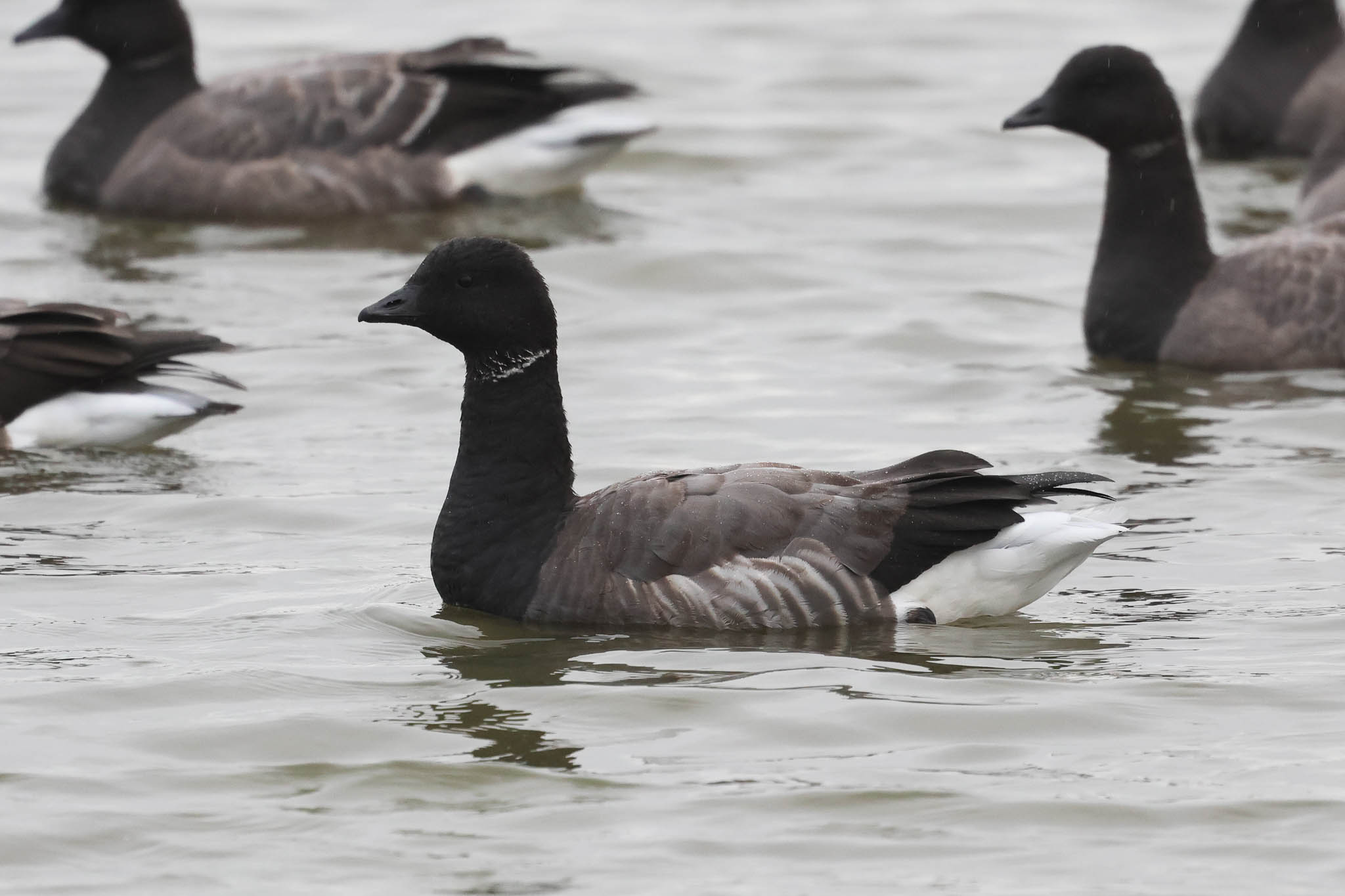
There were still 10 hardy Avocets out towards the back and a small group of Dunlin feeding along the edge of the far bund beyond. A few Black-tailed Godwits were dozing among the Wigeon on the next compartment along.
The rain stopped again quickly, so we made our way back out to the main path. We could see the Whooper Swan now – still very distant, but at least clear of the trees. Out on the saltmarsh, a Chinese Water Deer walked across. Five Common Snipe flew over. Further up, we stopped again by the bund to admire the Golden Plover, looking stunning through the scopes.
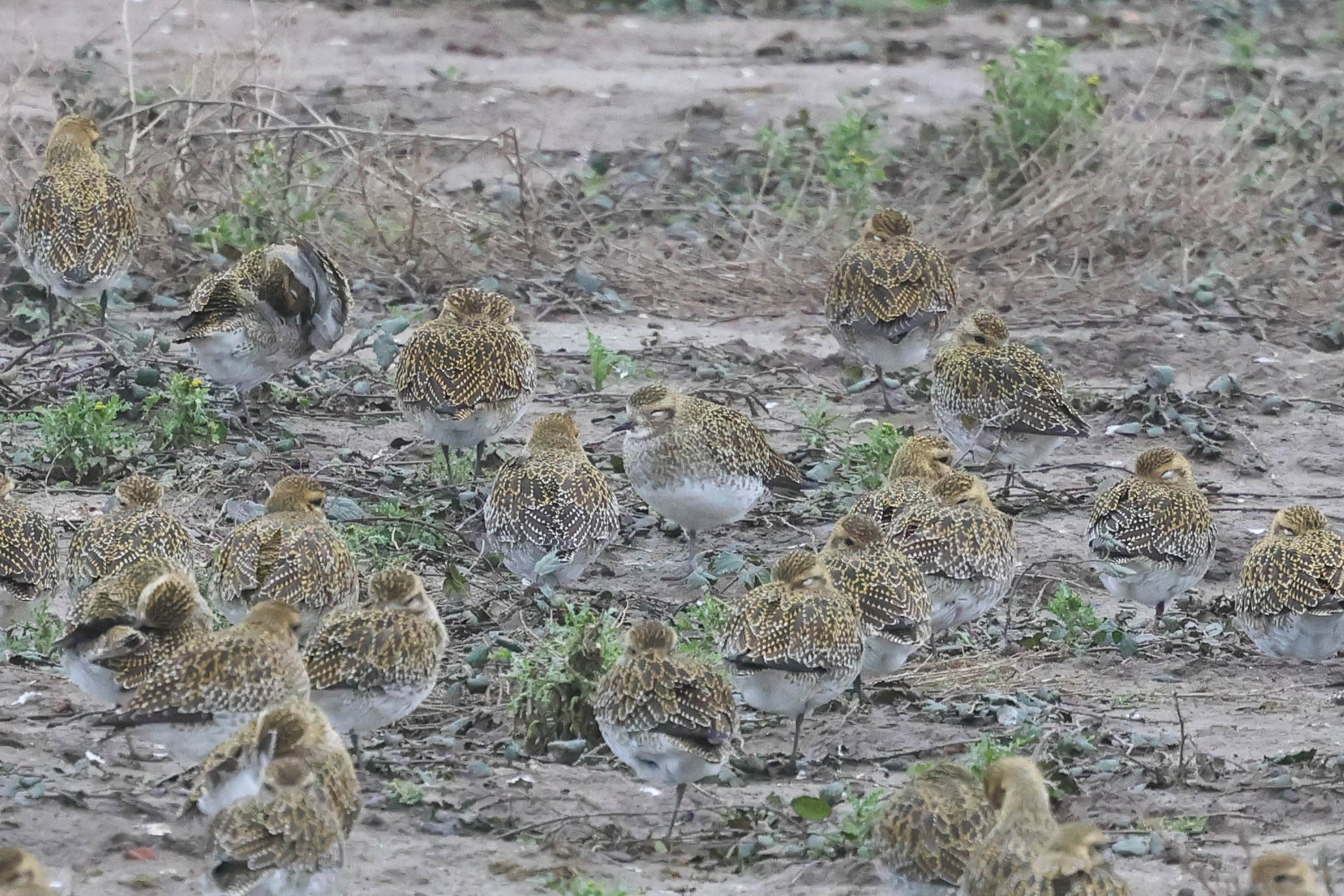
The weather had improved significantly now, and it had even brightened up a little, so we decided to make the most of it and head straight out to the beach. At the far side of the Volunteer Marsh, several Redshanks and Curlews were in the muddy channel. A Grey Plover was down in the water in the bottom towards the back and a Bar-tailed Godwit was on the muddy bank nearby. When it walked across to the other side, it joined a Black-tailed Godwit giving us a nice opportunity for comparison.
There was not much on the Tidal Pools today – more Pintail here out on the water. So we continued on to the beach. Here the tide was already coming in and the mussel beds were already covered.
Two Slavonian Grebes were on the sea together, close in, and we had a good view of them in the scopes. There were a couple of Great Crested Grebes too. Two Common Scoter flew past and several Gannets were plunge diving further out.
A couple of Sanderling were running around on the beach in typical fashion, in and out of the waves. Several Bar-tailed Godwits and a Grey Plover were feeding along the shore too and some larger flocks of Oystercatcher and Bar-tailed Godwit were roosting out on the beach to the east, towards Brancaster.
We had been told there was a Spotted Redshank on pools out on the saltmarsh behind the dunes earlier, but it had disappeared. We scanned again now, and found it feeding in the water around a Little Egret. Eventually it came out onto the vegetation where it was easier to see – we could see its longer needle-fine bill and neat white fore-supercilia meeting over the bill.
As we walked back, we called in at Parrinder Hide. Another dark cloud had blown in and there was a little light rain on and off. We could see the sky clearing again from the east, even if it took a bit of time to arrive, so waited for the rain to stop. A Great White Egret was stalking around in the water. A couple of Ringed Plovers were feeding with some Dunlin on the grassy island in front of the hide. A Water Rail show out of the reeds just below us but disappeared straight into the denser vegetation on the bund.
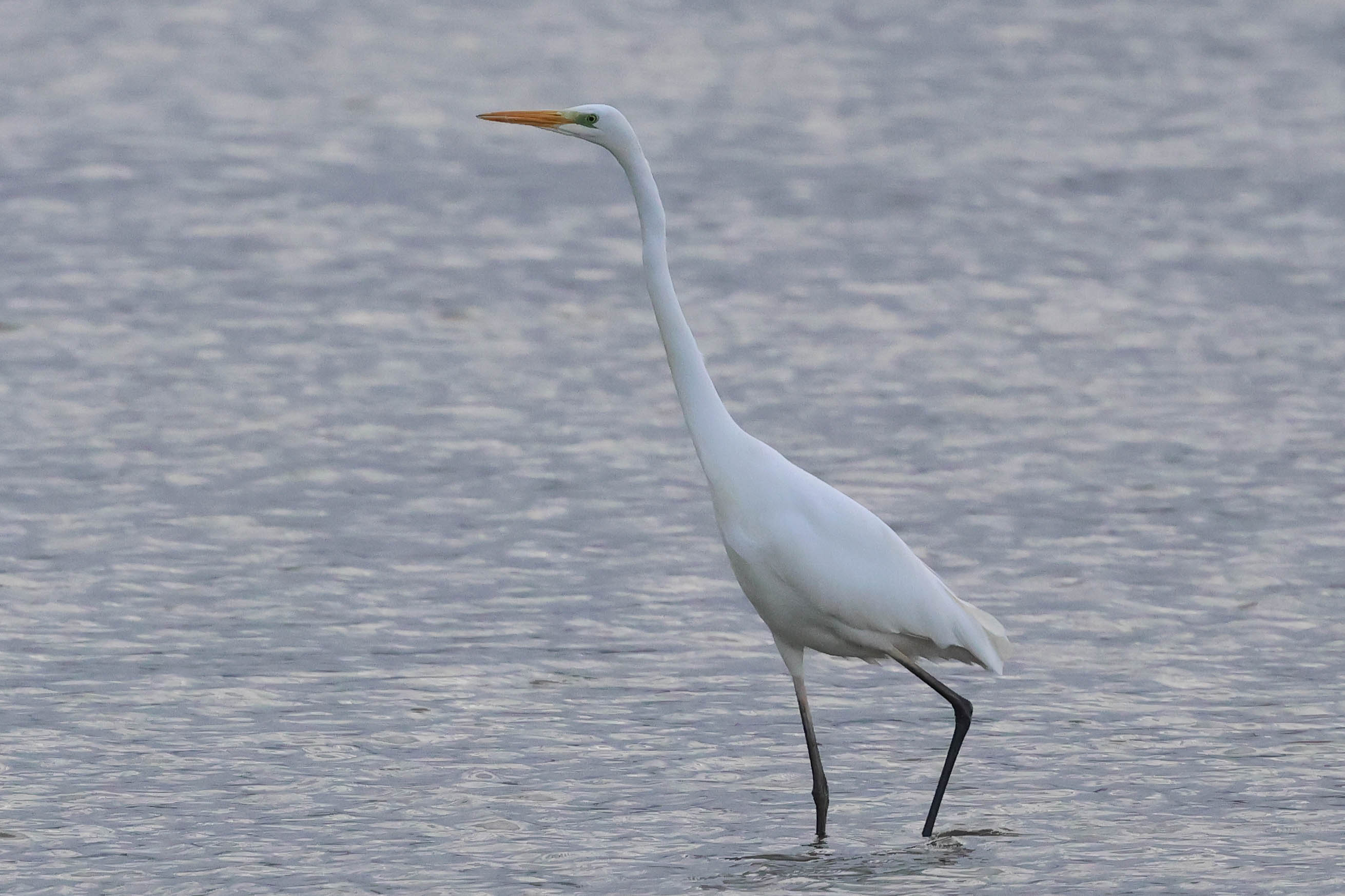
When the rain stopped, we continued on our way back. We diverted round via Meadow Trail, as there had been a couple of Siberian Chiffchaffs by the Dragonfly Pool. A Common Chiffchaff appeared in the sallows first, quickly followed by one of the Siberian Chiffchaffs. We could see the latter was much buffier, less olivey green. As it disappeared back into the sallows, it called – a plaintive monosyllable, very different. Another Common Chiffchaff flicked through following a flock of Long-tailed Tits.
We had a quick look out at Patsy’s Reedbed. Several Coot and Tufted Duck were new for the tour list and we had nice views of a couple of Common Snipe feeding on the cut reed. Then it was time to head back for lunch.
Back at the Visitor Centre, we came across another flock of tits and a female Blackcap appeared with them briefly. There were still lots of Goldfinch in the alders, so we collected our lunch from the minibus and ate today on the tables by the Centre (as the cafe was closed). Scanning the trees, we eventually found a single Siskin in with the Goldfinches, the best we could do here today.
After lunch, we drove round to Gypsy Lane. The walk out through the trees was quiet but there were several Redshanks and Curlew, plus Little Egret and Grey Heron on the saltmarsh beyond.
The Hume’s Warbler started calling from across the pool shortly after we arrived, but we couldn’t see it. It was very vocal so we waited to see if it would come out. There were a few Reed Buntings in the bushes and a female Stonechat flycatching.
Our timing was fortuitous as the grey clouds receded and the sun came out now. We had a glimpse of something flick into the sallows further along and then the Hume’s Warbler appeared in one of the bushes right by the bank. We walked up towards it and were treated to some great views. It flicked around for some time on the sunny edge of the sallow, calling constantly – the call distinctly squeakier than a Yellow-browed Warbler.

They were far better views of the Hume’s Warbler than we could have hoped for, so when it finally disappeared back deeper in, we decided to walk across to the beach. As we got to the sea, three Fieldfares were just coming in off, fresh arrivals from Scandinavia. Three Slavonian Grebes were riding the waves just offshore and another Sanderling was running around on the sand. We could see a juvenile Peregrine out on the beach on Scolt Head.
We could see some a few ducks in the mouth of the harbour channel, but they were very distant and impossible to see easily in the swell. With the tide pretty high now, we decided to try Brancaster Staithe and see if anything had gone further into the harbour.
The sun was already going down and the temperature was dropping fast as we walked back. A Marsh Harrier was circling over the reeds towards the back of Titchwell, gathering to roost. A Great Spotted Woodpecker flew in and landed in the dead trees by the path, calling.
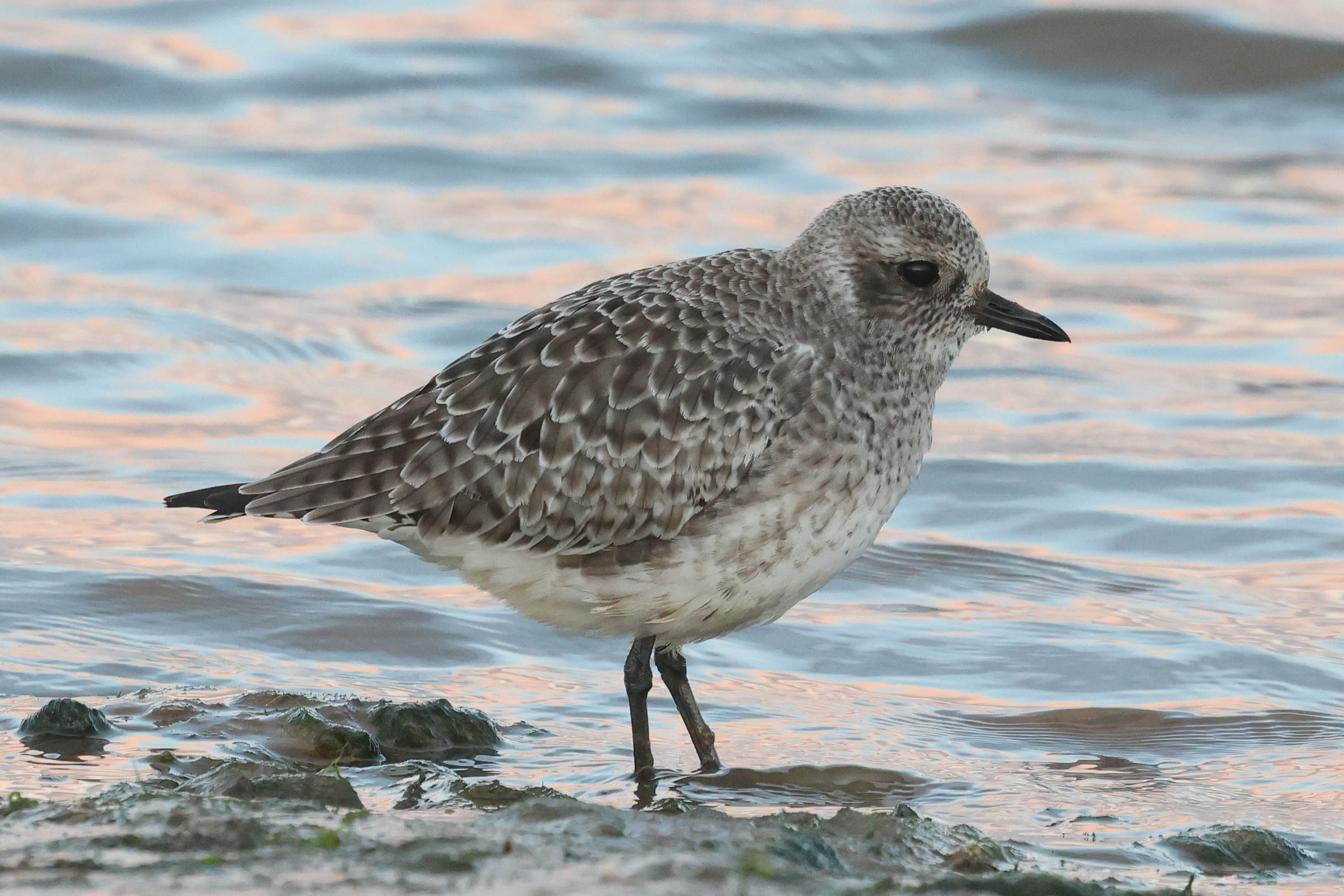
When we got to the Staithe, a Grey Plover was feeding on the edge of the car park as we got out. There were lots of Turnstones picking around where someone was raking up the leftover mussels. One of them had a set of colour rings – ringed locally rather than further afield, it seems to be a regular here. We had nice close views of the Bar-tailed Godwits on one of the islands, but the Red-breasted Mergansers were very distant, right out at the far end of the harbour. Several Pied Wagtails flew in and landed on the boats, coming into roost.
The light was going now and it was time to head back. A very good first day, with the promise of more tomorrow.
















